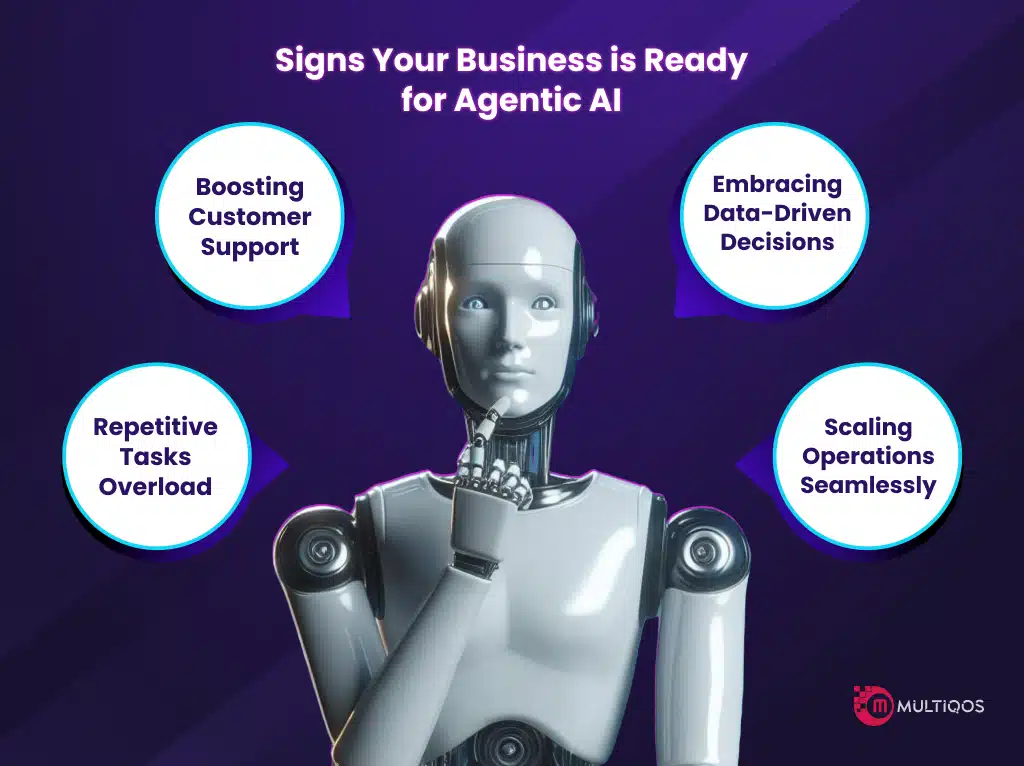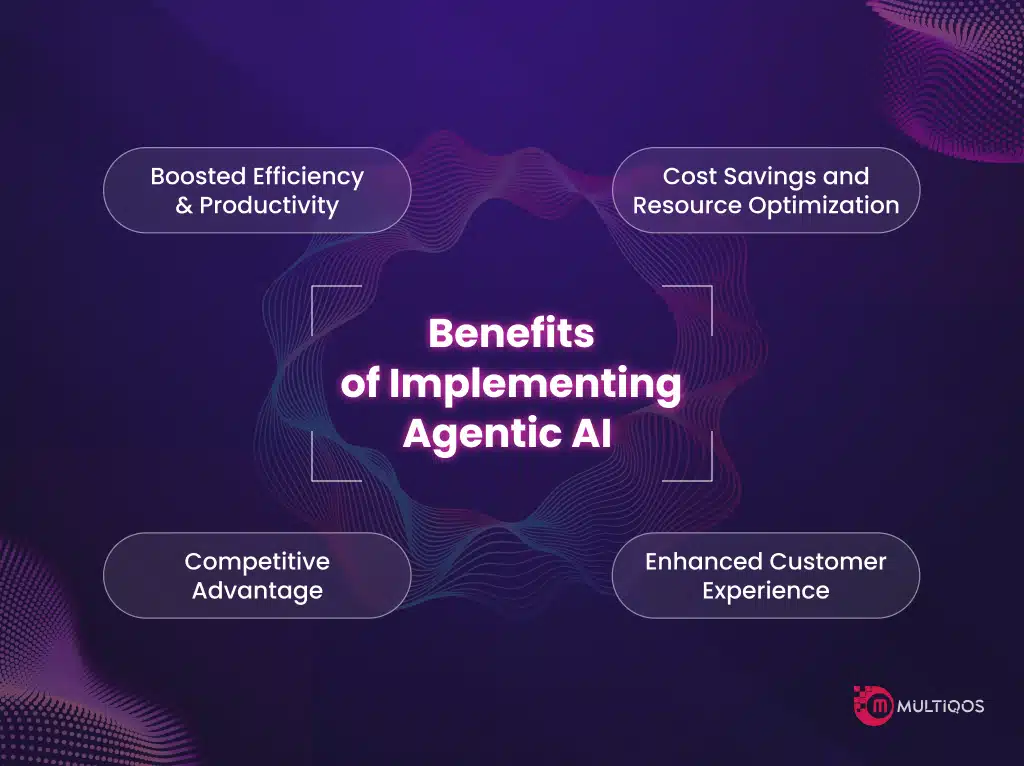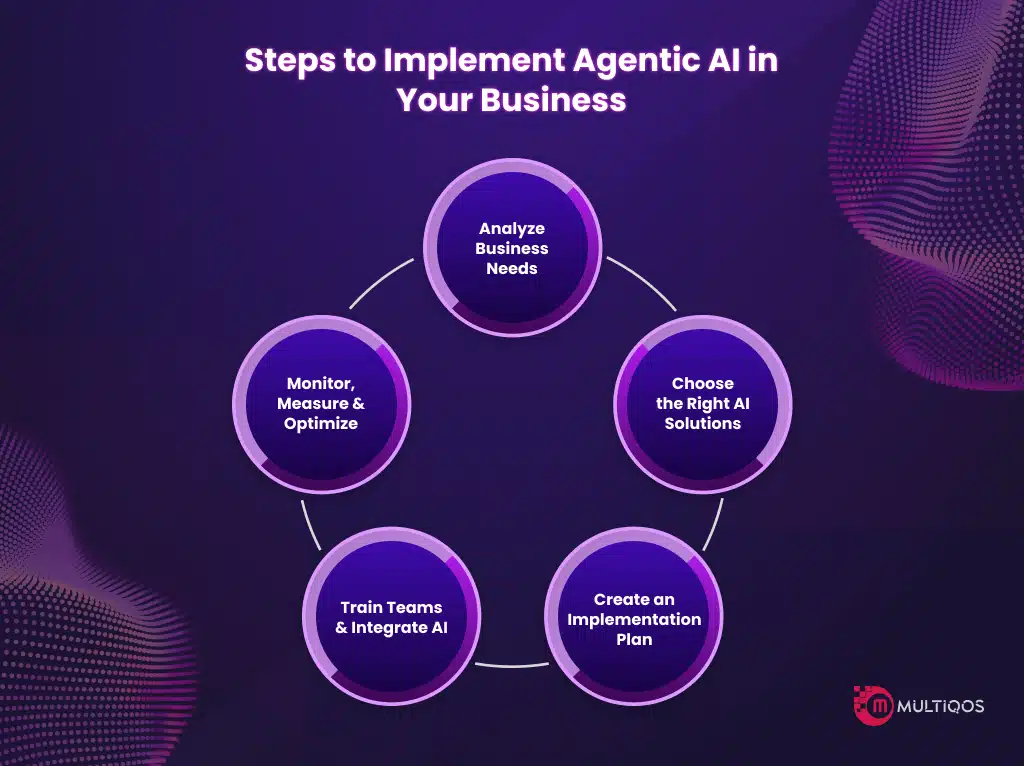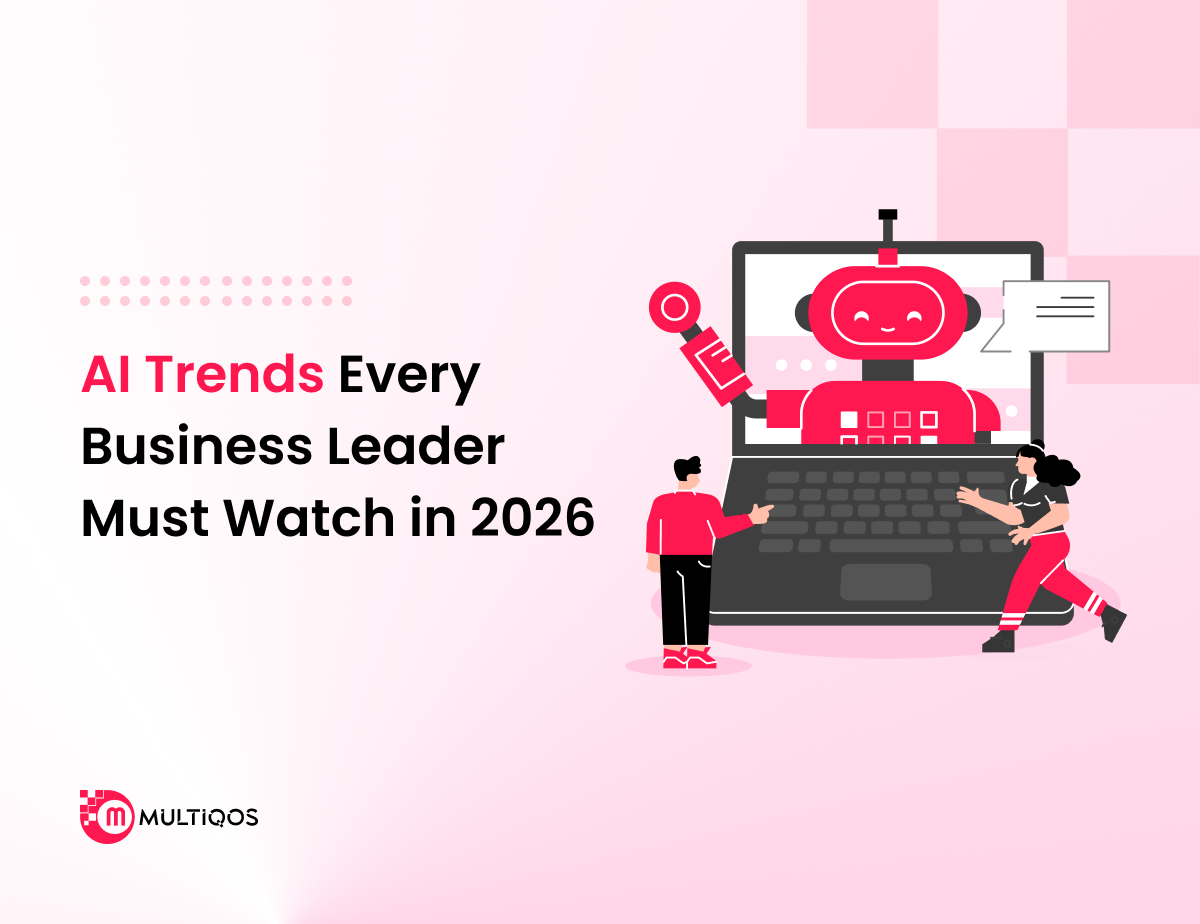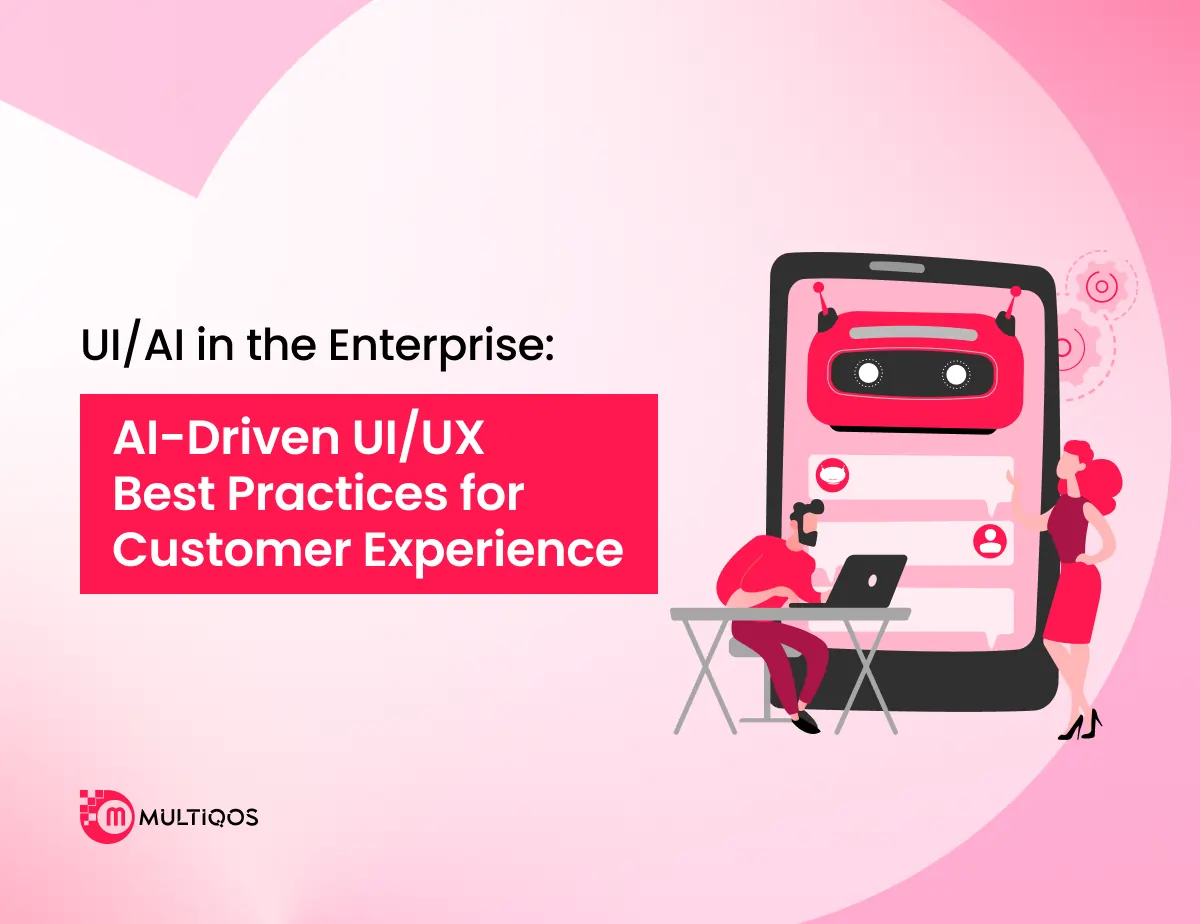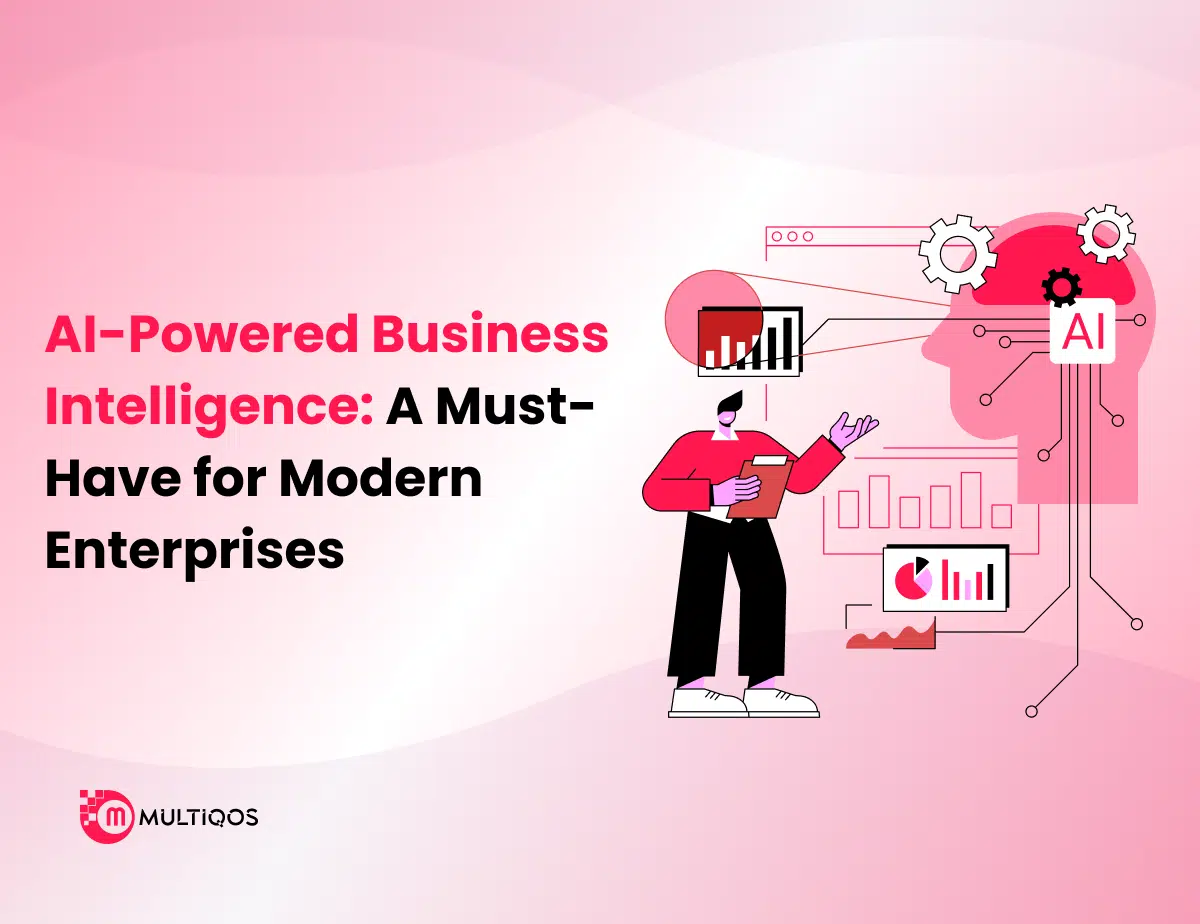The Path to Smart Automation: Is Your Business Ready for Agentic AI?
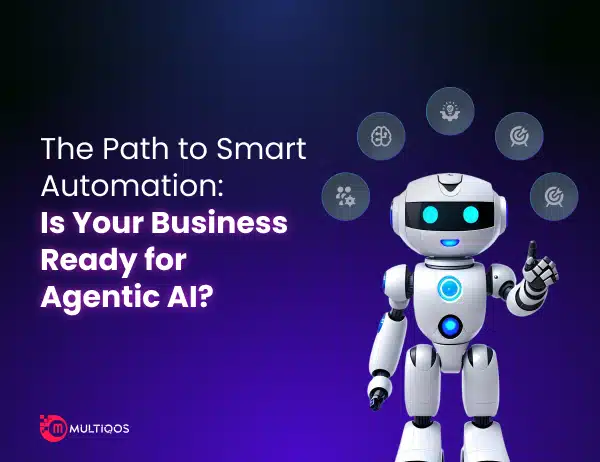
Quick Summary:
This blog explores the journey to smart automation with Agentic AI. It highlights how businesses can evaluate their readiness, implement AI technologies, and streamline operations to boost efficiency and drive smarter decision-making.
Introduction
Integrating AI has become paramount for success as the business landscape continues to evolve. The recent development in this field is agentic AI that can make decisions, perform complex tasks, and adapt new challenges without reference to human entities.
A recent business survey showed that 77% of businesses expect to achieve the goal of optimizing efficiency and enhancing decision-making through AI.
As more and more of these autonomous technologies begin to emerge, a lot of companies are slowly opening up to the idea of using agentic AI to improve their work processes, customer satisfaction, and product development. But how do you know now if your business is ready to embrace this shift that holds such profound potential?
In this blog, we’ll consider the important signs that tell your company is ready to adopt agentic AI. From scaling your operations to enhancing decision-making processes, these signs must be noted early to stay ahead of the competition.
We will also discuss why collaborating with an AI development company might be crucial to achieving these goals in your business successfully. Whether you have just started using AI services or are experimenting with it, understanding these key steps to gain their full potential is important.
Understanding Agentic AI
Agentic AI is an advanced artificial intelligence system capable of taking autonomous actions based on predefined objectives and contextual understanding.
Compared to conventional AI models that follow explicit instructions, agentic AI development operates independently, making decisions and performing tasks without continuous human intervention.
At its core, agentic AI has the potential to revolutionize industries by enabling faster decision-making, enhancing productivity, and driving innovation. It can be applied in various fields, from customer service and finance to healthcare and logistics, where its ability to analyze data, predict outcomes, and optimize processes can deliver a competitive edge.
Thus, AI continues to progress, agentic AI development presents itself as a critical change in reshaping industries and revolutionizing work.
Signs Your Business is Ready for Agentic AI
Sign 1: High Volume of Repetitive Tasks
The problem of repetitive and routine tasks should alert a business to the possibility of incorporating agentic AI. These systems are typical for the execution of repetitive tasks such as data input, calendar management, and stock control.
It can be seen that AI can contribute time and effort thus minimizing the opportunity for errors and enabling the team to prioritize the higher-value outcome processes.
Sign 2: Need for Enhanced Customer Support
Customer support is essential but it becomes very tiring when you are flooded with a lot of complaints. Agentic AI development can contribute by offering customer service using technologies like chatbots and virtual assistants who can address customer inquiries anytime.
This increases customer satisfaction while decreasing the load on your customer service department.
Sign 3: Data-driven Decision Making
In today’s business world, data is king and every one of us knows it. Effective decision-making and timely decision-making are often required with agentic AI, you can get more of this as it can integrate a lot of data to provide patterns at timely intervals.
These systems can help in predictive analysis, identifying trends making decisions on strategies, and helping you make efficient decisions on time.
Sign 4: Scaling Operations Efficiently
When a business reaches a certain level of expansion, it becomes difficult to expand operations. Agentic AI can help because it will be able to bring automation to crucial processes and guarantee that the systems are ready to meet increased utilization.
With supply chain management to enhanced workflow, your operations will be streamlined, thus increasing your productivity and yet cutting on cost as you grow your business.
Benefits of Implementing Agentic AI
1). Improved Efficiency and Productivity
Adopting Agentic AI development helps organizations create an environment where employees can focus on more high-value activities and automate repetitive and time-consuming tasks. AI helps to cut unnecessary workflows that need human interaction enhancing the effectiveness of operations across different sectors.
Furthermore, the use of AI-based systems can reduce the time taken to do analysis when it comes to large data sets leading to improved time invested in routine tasks. Thus, the overall business productivity is increased, enhanced throughput, and a more flexible and agile workforce efficiently capable of meeting challenges.
2). Cost Savings and Resource Optimization
Incorporating agentic AI in business significantly reduces operational costs as it automates tedious tasks that require human resources like inventory management, customer support, and data analysis.
Also, such AI systems are capable of optimizing resource allocation by predicting demand, effectively managing inventories, and enhancing scheduling to make sure that all resources are efficiently used.
This not only saves cost, but also reduces the possible chances of incurring high costs in the form of errors, breakages, and delays, thus giving businesses overall profitability.
3). Enhanced Customer Experience
AI solutions provide consumers with an enhanced real-time customer experience by identifying customer data and tailoring interactions based on individual preferences. With the help of chatbots and virtual assistants, businesses are now able to offer 24/7 customer support, which means customer’s questions will be resolved immediately.
This capability to deliver faster responses, coupled with personalized recommendations, improves customer satisfaction and fosters loyalty, ultimately strengthening the relationship between the business and its clientele.
4). Competitive Advantage
Agentic AI confers a competitive advantage to organizations and helps them to become more innovative than adapt to the evolving dynamic market. That way, AI can identify new opportunities, and trends, make informed decisions, and anticipate market shifts that help them stay ahead of the competition.
According to the experts, AI can create value and enhance products and services to increase the company’s appeal to the customer in the market. Besides, machine learning and AI help to be more adaptive and ready for future changes or unknown targets to meet customers’ expectations while providing long-term competitiveness.
Considerations Before Implementation
1). Infrastructure readiness: Assessing your current technology stack
When implementing Agentic AI, it is necessary first to assess the current infrastructure of your organization to consider whether the organization can handle the new systems.
AI may need large computations, storage, and a trusted communication network, which may necessitate procuring new structures or redesigning existing ones.
Determining your servers, cloud platforms, and data management systems your firm has, will be crucial when deciding whether they are ready for AI solutions. If your infrastructure is inadequate in terms of provisions such as scalability or if you use aged structures, the change might slow, hinder operations, or become costly during raising.
2). Talent and skills: Ensuring you have or can acquire the necessary expertise
The success of AI can be highly dependent on the type of expertise that an organization has in areas such as machine learning, data science, or the integration and deployment of AI systems.
The internal resources that an organization possesses require evaluation to identify those who possess skills enough to undertake a certain project or an organization has to search for talent in the market and develop talent.
Sometimes one may need to engage with other people more knowledgeable in AI to make up for the gaps in knowledge within a firm. The third aspect of AI is access to a skilled labor force; the workforce required to build, implement, and further refine AI solutions to achieve sustainable business results.
3). Budget: Evaluating the cost and ROI of AI implementation
The financial implications of adopting agentic AI should be ascertained since it is costly in the long run to undertake. Some of the expenses are hardware and software, outsourcing specialized manpower, and staff training.
However, maintenance, update, and if necessary scaling, would cost continuously in the future as well. But to mention the ROI that businesses will be getting in the long run would be crucial for them to take into consideration.
The cost savings, increased productivity, and potential new revenue streams that AI can generate should be weighed against the upfront expenses. Planned financing will also assist in establishing the value of the benefits when compared with the cost.
4). Data quality: Importance of having clean and well-organized data
Like most existing technologies, Artificial Intelligence requires large amounts of data to operate optimally. However, the quality of that input data controls it, meaning that an AI model is only as good as the data it was fed on. Incomplete, unstructured, or low-quality data may result in poor, unreliable insights, and ineffective decisions.
Before data can be used in the applications of artificial intelligence, organizations should clean it and it should be organized and unbiased. In particular, the transition to a sophisticated AI system will require sound data governance and management methods to ensure that the data collected is of high quality to support the AI system and deliver insights to the business.
Steps to Implement Agentic AI in Your Business
Step 1: Conduct a thorough business needs analysis
Before integrating Agentic AI, the first process is known as business needs analysis. This involves a process of defining where, exactly, in your business, the execution of AI will be beneficial. There must be some identification of what activities in the business might be best served by AI; automation, analysis, or support with decisions.
When the improvement efforts are linked to the strategic goals, it Unlocks the Ends and means by ensuring that the use of AI is solving a real business problem hence increasing value to the business’s bottom line whether in efficiency, customer satisfaction, or reduction of costs.
Step 2: Identify the right AI solutions and vendors
The next step is to determine the appropriate AI solutions that will serve the existing business needs. Consider whether your organization needs its unique solution or can solve problems with the help of ready-made tools. Consider your goals: here, various AI methods can be within the segment, for example, machine learning, natural language processing, and robotic process automation.
Another consideration is the selection of the proper AI sellers or providers; you want to recruit an organization with satisfactory expertise, a good record, and the potential for continuing assistance and growth for your AI implementation.
Step 3: Develop a detailed implementation plan
After selecting the most suitable AI solutions and vendors to extend your business, it is high time to create a detailed implementation plan. This should comprise goals and objectives based on timelines, project reference points, resources, and risk control.
Determine what part of the business shall be impacted by the AI system, what results you are hoping to achieve, and how success shall be evaluated.
An implementation plan refers to a clear concept that stabilizes the functioning of any deployment, engages all the participants in the organizational process, and prevents the establishment of unrealistic expectations that may hinder business operations, especially during the deployment of a particular project.
Step 4: Train your team and integrate AI with existing systems
Organizational adoption of AI also depends on the extent to which the AI tools fit into your firm’s structures seamlessly. This may entail achieving compatibility with the existing IT infrastructure for instance organizational systems, databases, or other platform applications.
In parallel, you need to train your team that use those new AI technologies so that they feel at ease with the kind of change that will be experienced. Implement technical training for those involved in the management of AI systems and training for the user-employee level.
This step can assist in getting the most from the usage of AI as well as integrating all the separate teams and making cooperation with AI effective.
Step 5: Monitor, measure, and optimize AI performance
Once the AI system is live, continuous monitoring and performance evaluation are required to ensure its effectiveness in achieving the expected results. This will make use of performance indicators like accuracy, efficiency, apparent satisfaction of clients, and cutting out of costs.
Conduct systematic assessments of the system’s results and feedback from the users regarding the system.
Later, AI models should be retrained with new data or retuned to make it perfect in fulfilling their function efficiently. This continuous refinement guarantees that the AI keeps on providing as much value as possible and generates additional capability for the organization in responding to new requirements or shifts in market conditions.
Conclusion
In conclusion, Agentic AI is not a trend, it’s a strategic move that can significantly improve overall productivity and enhance your operations. As mentioned in this blog, there are features suggestive of increasing adoption of automation technologies now than in the past.
If you are planning to be relevant and grow while adapting to changes in the market, it is time for your organization to find out how Agentic AI can help facilitate your company’s digital transformation journey. Embrace the future for a smarter and more efficient tomorrow until it’s too late.
People Also Ask
Signs that the company is ready to employ Agentic AI include when it deals with high volumes of standard operational tasks, needs more data analysis to make desired decisions, or would like to improve and make customer interaction a more efficient process through AI. Moreover, if you are in the process of digital transformation or are planning to embark on one, Agentic AI may well fit next in line.
In most cases, the costs of integrating Agentic AI solutions are proving to be relatively low in the long run and are further decreasing in cost for small businesses. In the long run, it can also result in great savings, reduced operational costs, increased efficiency, and better-valued customer returns.
In contrast with conventional Artificial Intelligence which is commonly designed to process data or to help humans make decisions, Agentic AI is a computational system that makes decisions and acts on them independently. This results in a short time to complete operations and in decision-making.
Several sectors including financial, healthcare, customer service, and retail can make much use of Agentic AI. Through efficiency, effectiveness, and reduction of operational costs it will help in improving the results across these sectors, customer relations can also be improved through its adoption.
With technology advancing further, the application of Agentic AI is expected to advance in terms of performing business innovation, and overall throughput and competitiveness within the burgeoning market. This intelligent automation technology is limitless and hence the future holds bigger chances for organizations to adopt the new advancement.
Get In Touch


